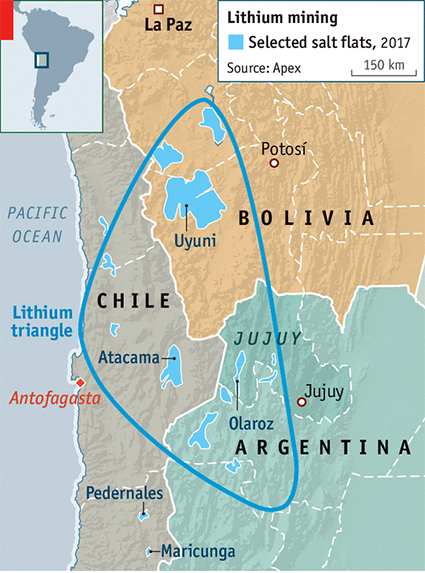Jammu & Kashmir
Re-Exploration of J&K's Lithium Reserve
- 18 Oct 2024
- 5 min read
Why in News?
Recently, the 5.9 million tonnes of lithium reserves in Jammu & Kashmir (J&K) are set for re-exploration after failed attempts to auction the reserve due to insufficient exploration data and industry reluctance.
- This move aims to boost India's domestic lithium production, which is critical for energy transitions and reducing dependence on imports.
Key Points
- Current Status of the Reserve:
- The Salal-Haimana block in the Reasi district of J&K holds an estimated 5.9 million tonnes of lithium reserves. It is India's largest lithium find, announced in February 2023.
- The Salal-Haimana block also contains titanium and bauxite, which may have additional extraction potential .
- However, the block is still at the G3 level of exploration, which involves preliminary prospecting and mapping
- The Salal-Haimana block in the Reasi district of J&K holds an estimated 5.9 million tonnes of lithium reserves. It is India's largest lithium find, announced in February 2023.
- Re-Exploration to G2 Level:
- The Ministry of Mines has directed the Geological Survey of India (GSI) to elevate the exploration to at least the G2 level.
- This involves more detailed surveys and geological studies, which provide better data on the commercial viability of the reserves. Achieving G2 means clearer reserve estimates and improved resource confidence.
- The Ministry of Mines has directed the Geological Survey of India (GSI) to elevate the exploration to at least the G2 level.
- G2 exploration is more detailed compared to G3. It includes drilling and trenching to estimate the size, grade, and shape of the mineral deposit. Further exploration to G1 (the final stage) is necessary for a more precise assessment before mining
- Lithium Ores and Extraction:
- Lithium is extracted primarily from spodumene (a lithium-bearing mineral found in pegmatites) or from brine pools where lithium salts are concentrated. In places like Chile and Argentina, lithium is mainly extracted from brines, while in Australia, it is mined from spodumene
- Challenges Faced in Auctioning:
- The first auction attempt in November 2023 failed due to a lack of sufficient bidders. The second attempt, which allowed for a single bidder, also saw no success. The key issue is inadequate exploration data, which makes potential bidders reluctant to commit.
- Experts caution that detailed exploration should not be rushed, as premature auctioning without solid resource estimates might deter future interest
- India’s Lithium Import Dependency:
- India currently imports all its lithium, with lithium-ion battery imports reaching USD 2.9 billion in 2023-24, primarily from China and Hong Kong. This underscores the importance of developing domestic lithium resources
- The discovery of lithium in J&K is seen as pivotal for reducing import dependence, particularly as India pushes for electric vehicle (EV) adoption
- Global Lithium Reserves and India's Efforts:
- Globally, 98 million tonnes of lithium resources exist, but only 26 million tonnes are considered reserves. Countries like Chile, Australia, and Argentina dominate the market. India has partnered with Argentina for lithium exploration and is exploring opportunities in Chile, Bolivia, and Australia
Properties of Lithium
- It is a chemical element with the symbol Li.
- It is a soft, silvery-white metal.
- Under standard conditions, it is the lightest metal and the lightest solid element.
- It is highly reactive and flammable, and must be stored in mineral oil.
- It is an alkali metal and a rare metal.
- The alkali metals consist of the chemical elements lithium, sodium, potassium, rubidium, caesium, and francium. Together with hydrogen they constitute group, which lies in the s-block of the periodic table.
- Rare Metals (RM) include Niobium (Nb), Tantalum (Ta), Lithium (Li), Beryllium (Be), Cesium (Cs) etc. and Rare Earths (RE) include Lanthanum (La) to Lutetium (Lu) besides Scandium (Sc) and Yttrium (Y).
- These metals are strategic in nature with wide application in the nuclear and other high tech industries such as electronics, telecommunication, information technology, space, defense etc.






-min.jpg)